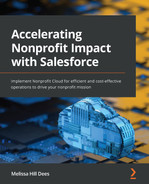Chapter 5: Tracking Volunteer Impact
Volunteers for Salesforce, sometimes abbreviated to V4S, helps nonprofits manage, engage, and track volunteer information. Almost every nonprofit that offers programs or services needs volunteers to power those programs and/or services. Sometimes, it is a few volunteers, while other times, it is hundreds or thousands of volunteers. V4S was designed to manage volunteer relationships at scale and record their interaction with your nonprofit organization. V4S is a free, open source, managed package from Salesforce that's designed to be used in conjunction with NPSP. V4S does not come with Nonprofit Success Pack (NPSP); it must be installed separately.
In this chapter, we're going to cover the following main topics:
- Overview of Volunteers for Salesforce use cases
- How does Volunteers for Salesforce work in NPSP?
- The volunteer interface for Volunteers for Salesforce
In this chapter, we will explore several different use cases for Volunteers for Salesforce depending on the requirements a nonprofit might have; the actual data architecture of the Volunteers for Salesforce app; and the options for the volunteer interface for Volunteers for Salesforce.
Overview of volunteers for Salesforce use cases
Volunteers come in all shapes, sizes, ages, and colors. Nonprofit organizations utilize and engage volunteers in many ways. Because V4S is open source and it is native to Salesforce, it can be configured and customized to fit a myriad of organizational needs. There are several critical distinctions to make to apply the best V4S design for a nonprofit. Let's explore some of the specific use cases and considerations where V4S works best for nonprofit organizations.
How are volunteers assigned to jobs?
Just as volunteers are different, so are the organizations where they volunteer. Nonprofit organizations may prefer a level of control over which volunteer should be assigned to a particular job. Or, depending on the job, nonprofits may allow volunteers to assign themselves.
Big Brothers Big Sisters (https://www.bbbs.org/) is a nonprofit organization whose mission is to create and support one-to-one mentoring relationships that ignite the power and promise of youth. The process of becoming a Big Brother or a Big Sister includes meeting specific needs and criteria, completing an application, and interviewing. The entire application and verification process for a volunteer to become a big brother or a big sister happens before Big Brothers Big Sisters begins to search for a little brother or sister.
V4S can be configured to capture volunteer information to start the process of becoming a Big; then, when a match is made, the coordinator can assign you as a Big Brother or Big Sister so that they can track the hours you have spent mentoring little brothers and sisters in the program:
Volunteer coordinators can report on volunteers, shifts, jobs, and hours with one of the many reports that come in the V4S package:
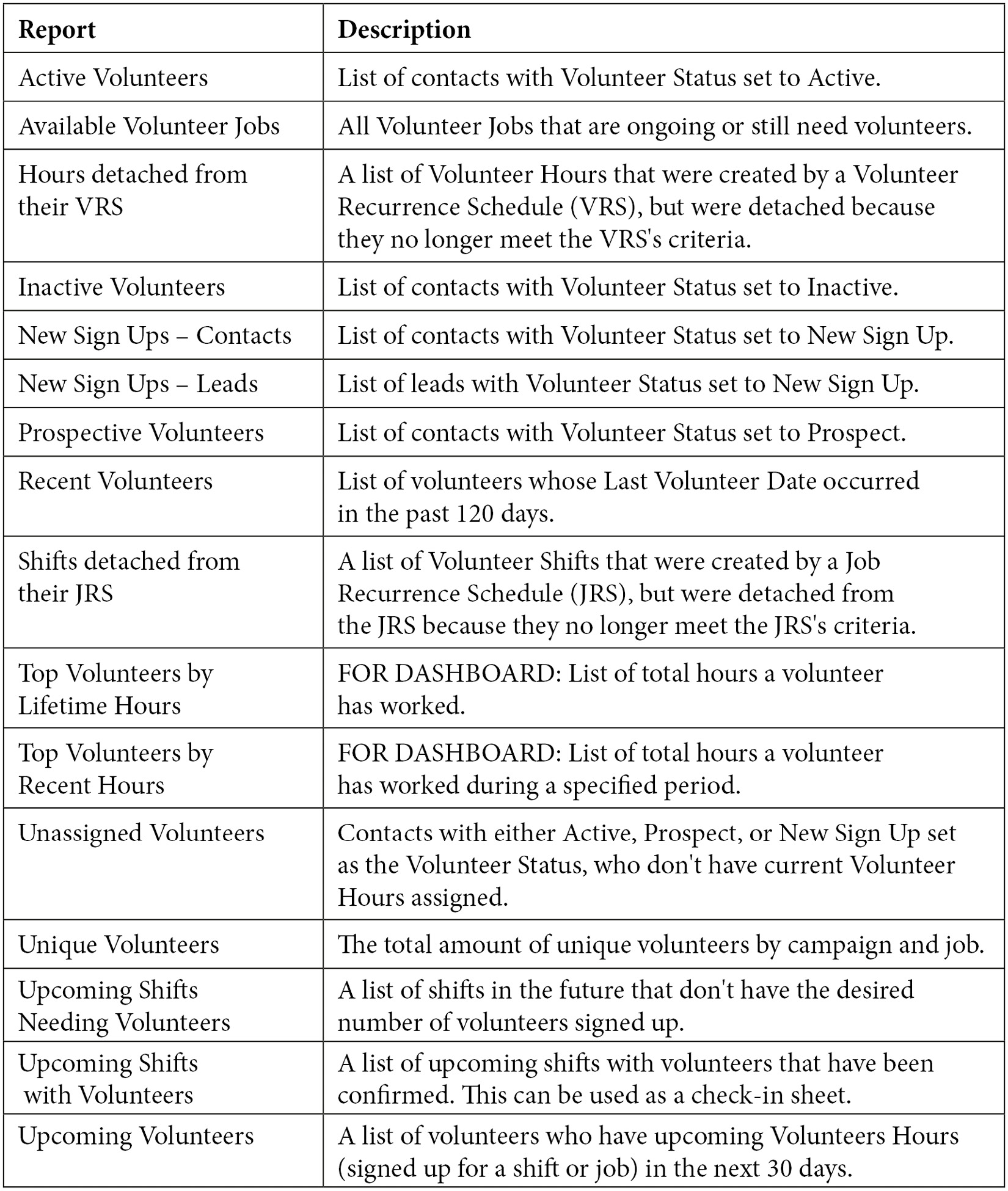
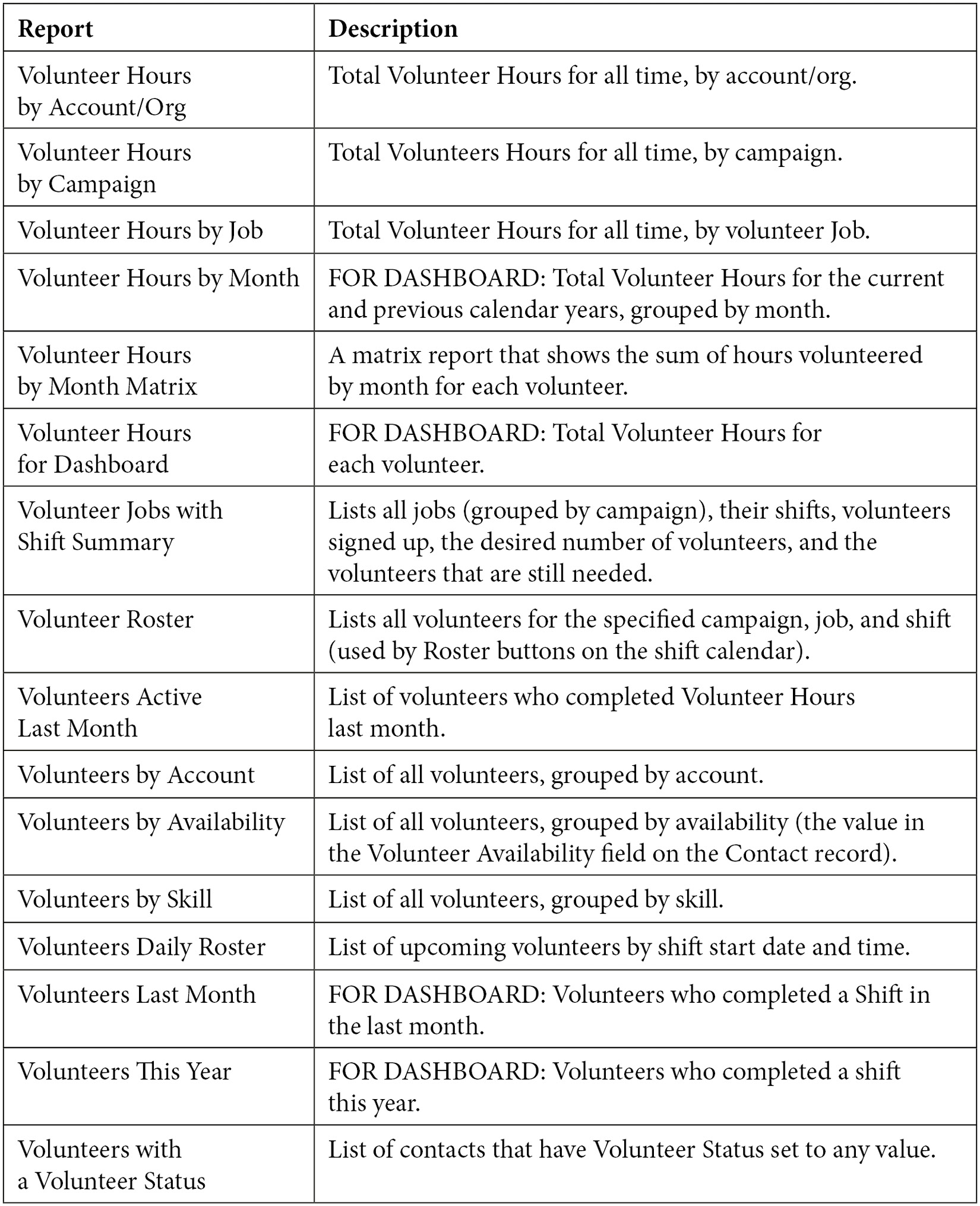
Table 5.1 – Standard reports included with the V4S package
These reports are the standard reports that come packaged with V4S. They can be edited to meet the specific needs of the organization or the organization can create new ones entirely.
Volunteers signup
A nonprofit community theatre is looking for a way to schedule volunteers who want to audition for parts in an upcoming play. They have specific dates and times that are available for volunteering and they can only accept 1-2 volunteers during any time block. Volunteers need to be able to sign up for a specific time slot. V4S's calendar functionality can be made available for volunteers to sign up:
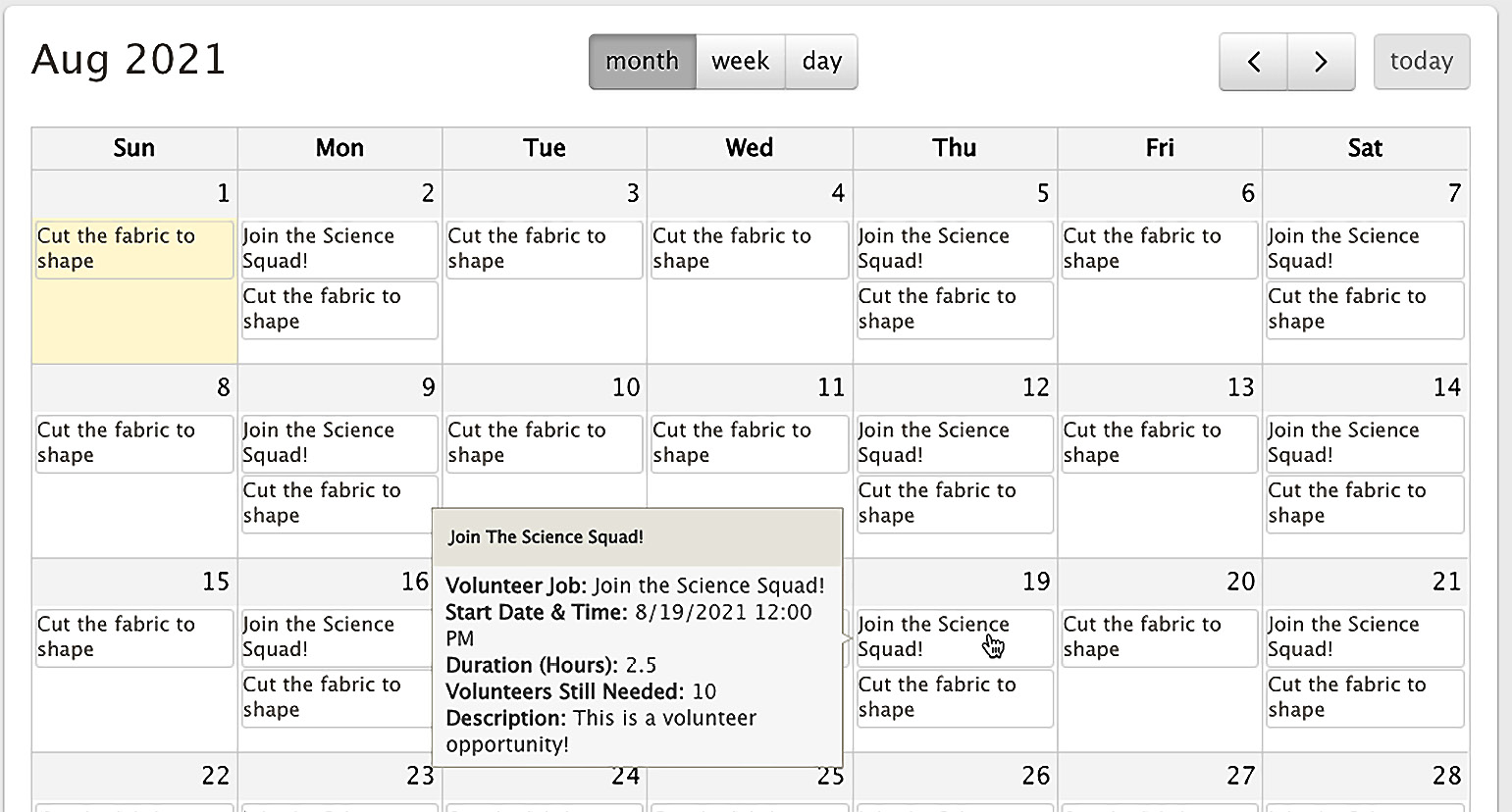
Figure 5.1 – V4S calendar on a public web page
As volunteers sign up on the public web page, this information is captured in Salesforce. These volunteers and their activity can also be seen in the reports listed previously in this section.
When you have a few volunteers
Some nonprofit organizations have a small number of dedicated volunteers who come back week after week to do the same job that they love. Other nonprofits have disparate and different volunteer jobs that may have only one shift or may only volunteer rarely. Another group of nonprofit organizations may have Volunteer jobs of both types.
Doing the same job repeatedly
Meals on Wheels (https://www.mealsonwheelsamerica.org/) is a nonprofit organization designed to improve the health and quality of the life of the seniors they serve so that no one is left hungry or isolated. Local community volunteers deliver meals daily. Most Meals on Wheels volunteers deliver while going the same route every week. 59% of home-delivered meal recipients live alone, and for many of them, the volunteer delivering the meal is often the only person they will see that entire day.
V4S allows volunteers to sign up for recurring schedules to track the hours they contribute on an ongoing basis. This route can take a volunteer 2 hours to complete or 4 hours:
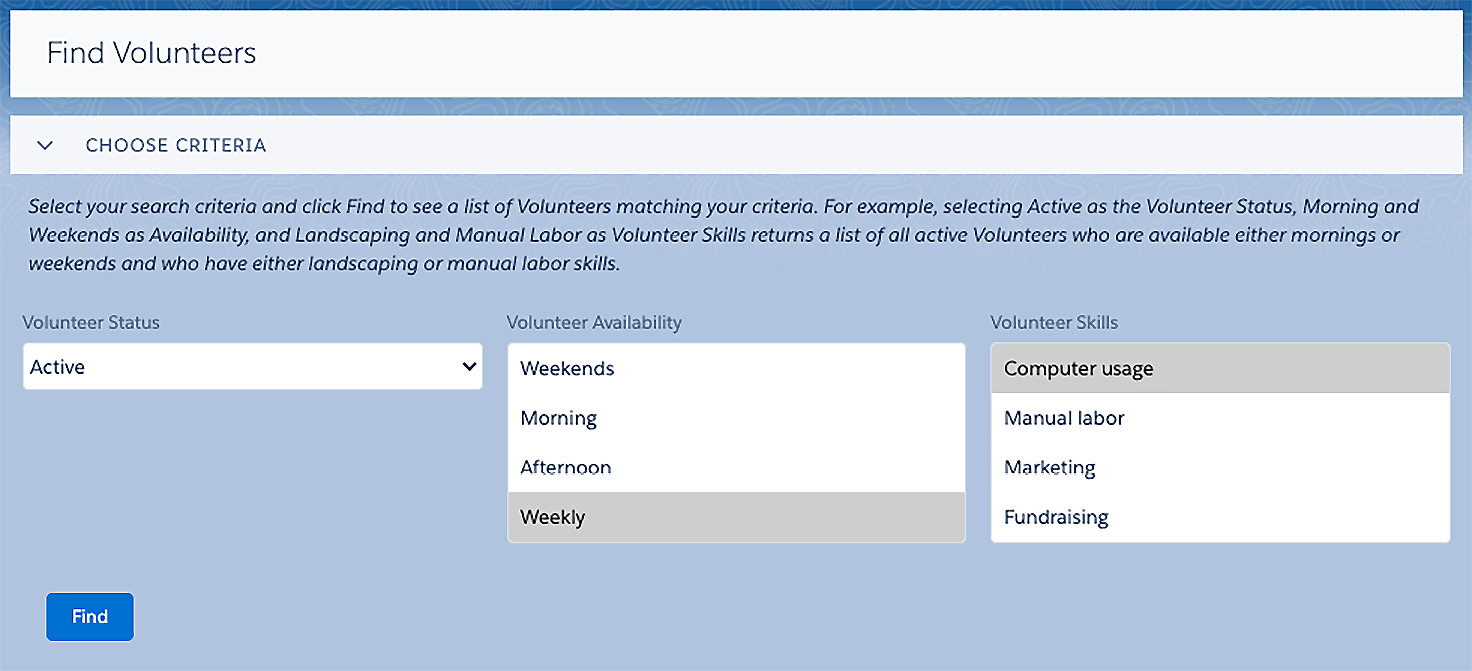
Figure 5.2 – Volunteers can indicate that they are available for long-term, weekly shifts
Doing random jobs on an ad hoc basis
Some nonprofit organizations have a variety of Volunteer jobs that range from pro bono assistance for a media campaign to answering telephones to sorting clothes or packing grocery boxes. Other nonprofit organizations have several programs that require different skills, depending on the volunteer job. V4S allows nonprofits to create different Volunteer jobs with different shifts and different skills, or even no skills at all:
,
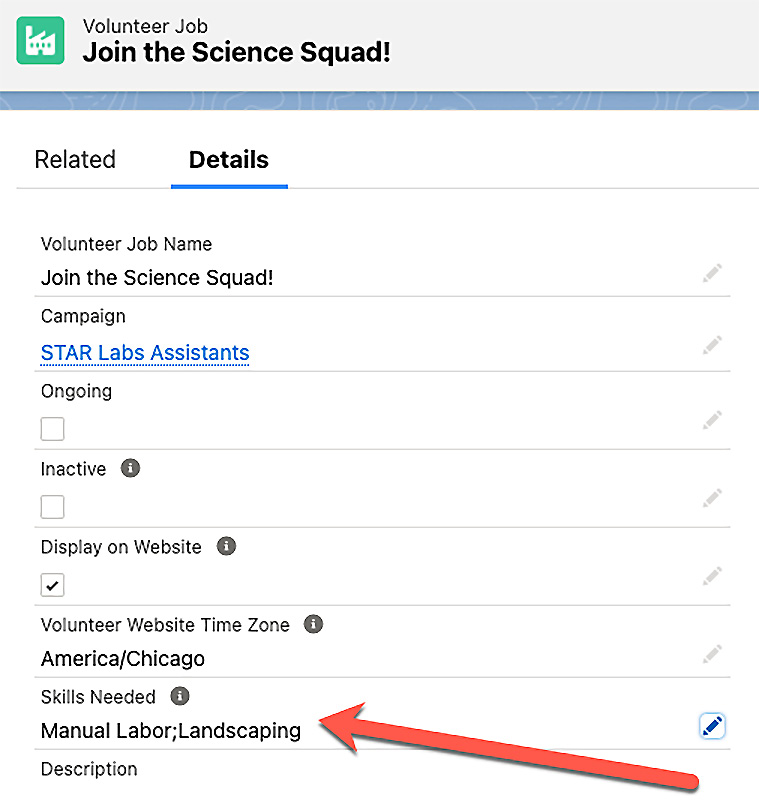
Figure 5.3 – V4S provides customizable options for Skills Needed, as well as whether the job is ongoing or not
When you have a lot of volunteers
Everything so far has involved a relatively small number of volunteers – probably less than 1,000 per year. But what happens when a nonprofit organization needs to scale? That is, when volunteer numbers grow exponentially, for whatever reason? Let's look at some use cases that nonprofits might have to use V4S in these situations.
Event volunteers
Any large-scale event that a nonprofit produces is going to require a large number of volunteers in a short period. Imagine an organization whose annual fundraiser is a triathlon. Just for the day of the event, volunteers are needed as safety marshals, at the hydration stations, as wetsuit strippers, in the athlete food tent, as timing assistants, at the aid stations, and even to check in on other volunteers. One such event required 700 volunteers on the actual day of the triathlon. If the event is over several days, the number of volunteers increases into the thousands very quickly. V4S helps organizers scale the volunteer effort by allowing volunteers to assign themselves to one or more shifts in the most needed areas:
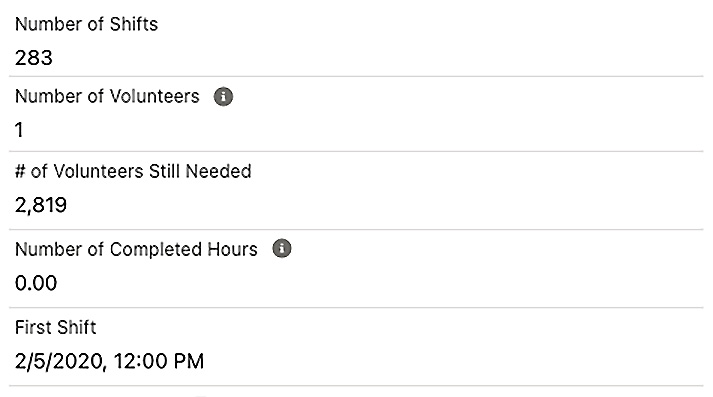
Figure 5.4 – V4S allows for shifts in volume and volunteer participation to scale
Disaster volunteers
Unfortunately, disaster volunteers are a common need in today's world. Everyone, from the American Red Cross to state volunteer agencies to local volunteer management centers, is called upon to manage volunteers in times of disaster. As soon as disaster strikes, volunteers want to help, regardless of the type of disaster. Generally, all those wonderful helpers pour into an area within the first 24-48 hours when the professionals are still working to assess the situation. Volunteers often don't understand why they can't be of assistance when they are ready, willing, and able. Three to six months after the hurricane or the tornado or the forest fire is when most volunteers are needed. V4S allows volunteers to share their desire to help so that nonprofits can capture that information, along with their specific skills, and reach back out to them when the time is appropriate. V4S uses the Campaign object to add volunteers (that is, Campaign Members) to the campaign:
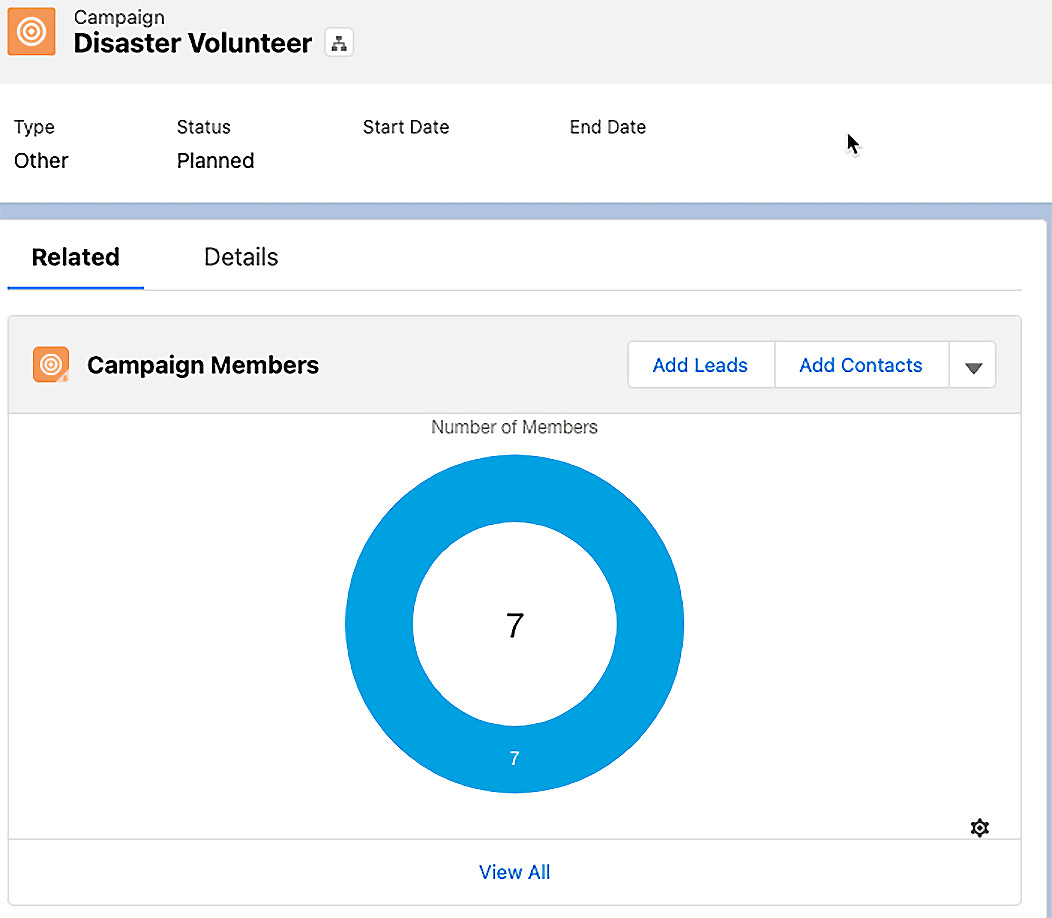
Figure 5.5 – V4S uses Salesforce's standard Campaign object to group volunteers
How does Volunteers for Salesforce work in NPSP?
V4S is not included in NPSP because it doesn't have to be. V4S utilizes the standard Salesforce objects; that is, Contact, Lead, and Campaign. Then, it adds a mere five more custom objects, plus a few fields, to the standard objects listed. There is a lot of power in a very simple application:
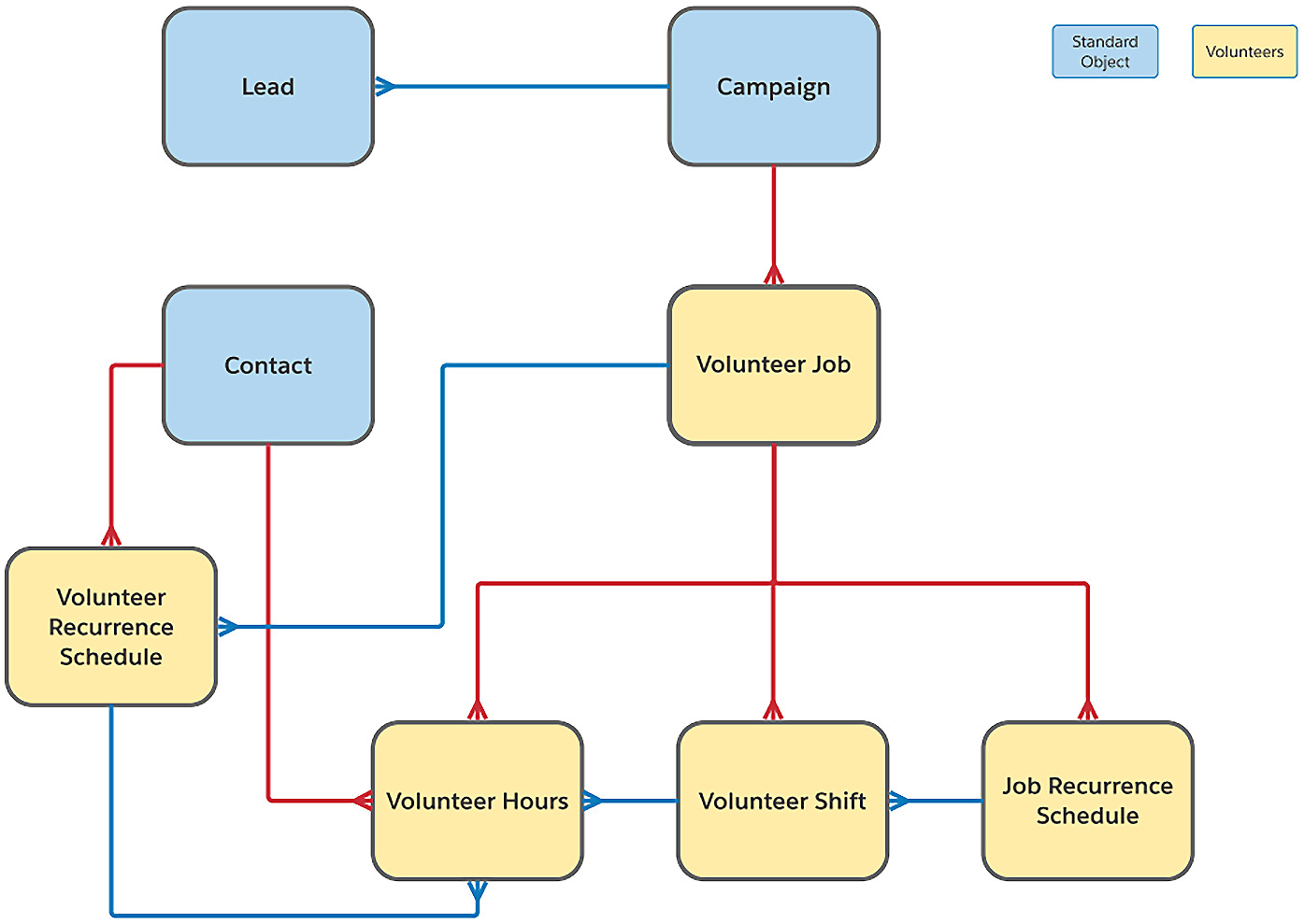
Figure 5.6 – V4S entity-relationship diagram
With this architecture, you can begin to see how V4S handles all the use cases we discussed earlier.
The standard Salesforce objects, Contacts and Leads, are used to track volunteers. A Lead is a volunteer who expressed interest in a specific volunteer campaign, such as the disaster volunteer. Contacts are volunteers who have signed up to perform a specific job or shift. Campaigns, another standard Salesforce object, is used to track volunteer engagements.
How does V4S use contacts?
V4S adds new fields to the Contact record. Each of the fields has a specific use in capturing and sorting information on volunteer engagement. Let's take a look:
- Volunteer Status: This is a picklist field that contains the standard options of Active, Inactive, New Signup, and Prospective.
- Volunteer Hours: This field is a rollup field where the volunteer's total completed hours are calculated.
- Volunteer Organization: If a volunteer is working on behalf of an organization, company, or group, this information is stored here.
- Volunteer Skills: This multi-picklist field is used to denote specific skills that a volunteer has indicated they possess.
- First Volunteer Date: This is another formula field that's used to capture the start of a volunteer's service.
- Last Volunteer Date: This is an additional formula field that's used to indicate the most recent date of the volunteer's service.
Additional picklist and multi-picklist values may be added to these fields based on the nonprofit's use case. Other custom fields may be added as well; see the following screenshot of a Contact record:
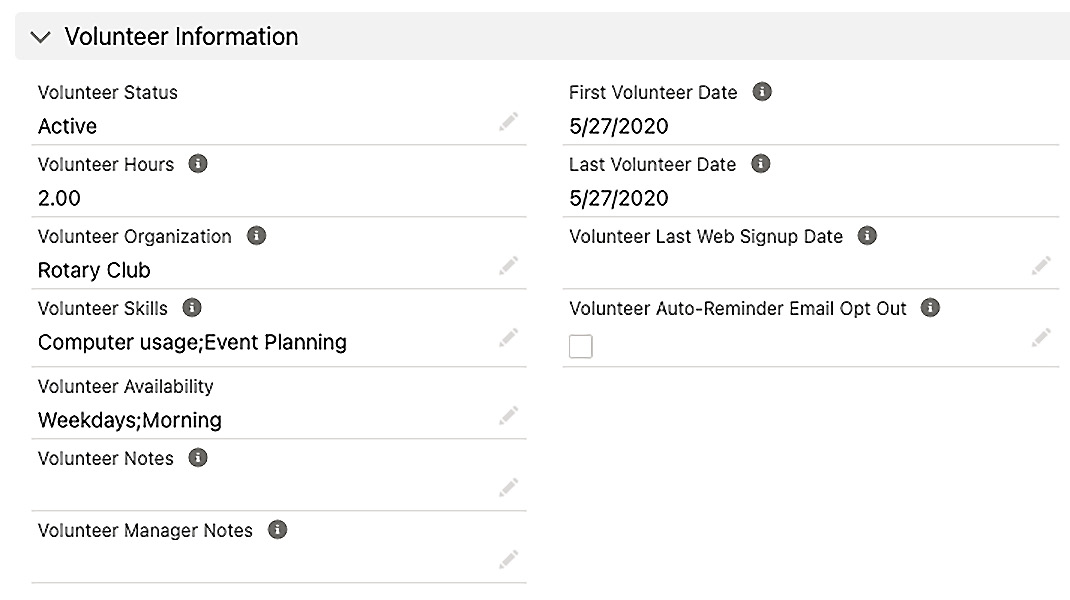
Figure 5.7 – Volunteer fields added by V4S to the Contact object
Volunteer coordinators can deactivate volunteers by changing their contact status. Volunteers and coordinators can also update their skills and availability. This functionality makes V4S more flexible to configure for specific use cases.
Campaigns and V4S
V4S has also added a few fields to campaigns to sum the data around volunteers into the Campaign record itself. These are almost all number fields. Let's take a look at these:
- Number of Volunteers: A rollup summary field (SUM Volunteer Job)
- Volunteer Completed Hours: A rollup summary field (SUM Volunteer Job)
- Volunteers Still Needed: A rollup summary field (SUM Volunteer Job)
- Volunteer jobs: A rollup summary field (COUNT Volunteer Job)
- Volunteer Shifts: A rollup summary field (SUM Volunteer Job)
- Volunteer Website Time Zone: Picklist values for time zones
The rollup summary values make it very easy to create reports and dashboards to easily see the level of engagement in volunteer campaigns. Rollups are not instantaneous; they are scheduled to run nightly:
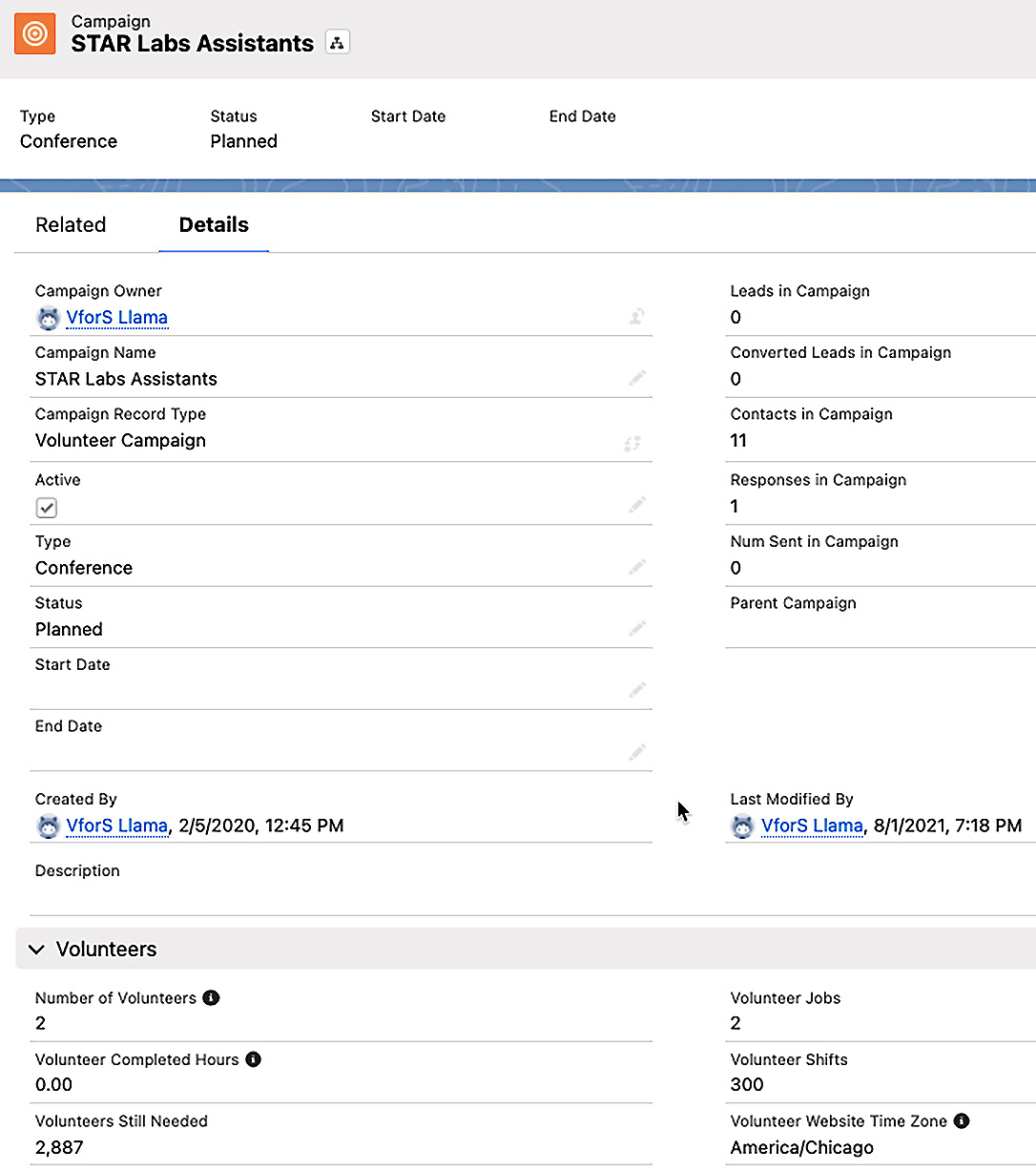
Figure 5.8 – Salesforce standard Campaign object with V4S custom fields
The custom objects of V4S
The objects that V4S adds to Salesforce via its open source package are as follows:
- Volunteer Job: Holds information about the high-level volunteer job itself and must look up to a campaign.
- Volunteer Shift: Holds information on date- and time-specific Volunteer jobs and looks up to a Volunteer Job.
- Volunteer Hours: Holds the quantitative information on the number of hours that have been volunteered for any given Volunteer Shift or Volunteer Job.
- Job Recurrence Schedule – Holds information on the Volunteer jobs that happen repeatedly.
- Volunteer Recurrence Schedule: Holds information on volunteers who sign up for the repeated, or recurrent, Volunteer jobs.
Jobs and shifts work together with campaigns to form the underlying framework for volunteers:
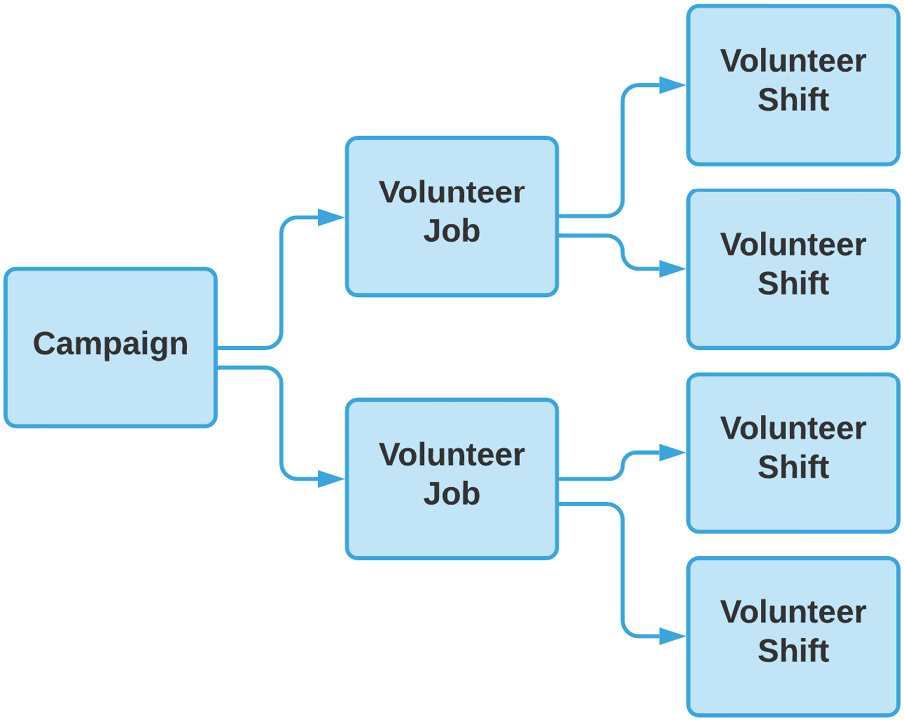
Figure 5.9 – Hierarchy of objects for V4S
The volunteer interface for Volunteers for Salesforce
There are two standard options for the volunteer interface for Volunteers for Salesforce:
- Website integration
- Experience Cloud
As we discussed earlier, providing volunteers with an easy-to-use interface is an important part of engaging volunteers, as well as disseminating the responsibility of signing up and tracking hours. If you don't have experience with website integration or with building out Experience Cloud, the volunteer interface can be the most difficult part of implementing V4S.
Website integration
There are detailed instructions in the V4S documentation concerning what and how you can integrate V4S pages into a nonprofit's website; we will look at this in more depth in Chapter 11, Configuring Additional Features and Security, when we go through all the configuration steps. The short story is that you can create an IFRAME tag and share that with the website developer, who will insert it into the nonprofit's web pages:
Note
Out-of-the-box functionality does not provide mobile responsive IFRAMEs for V4S.
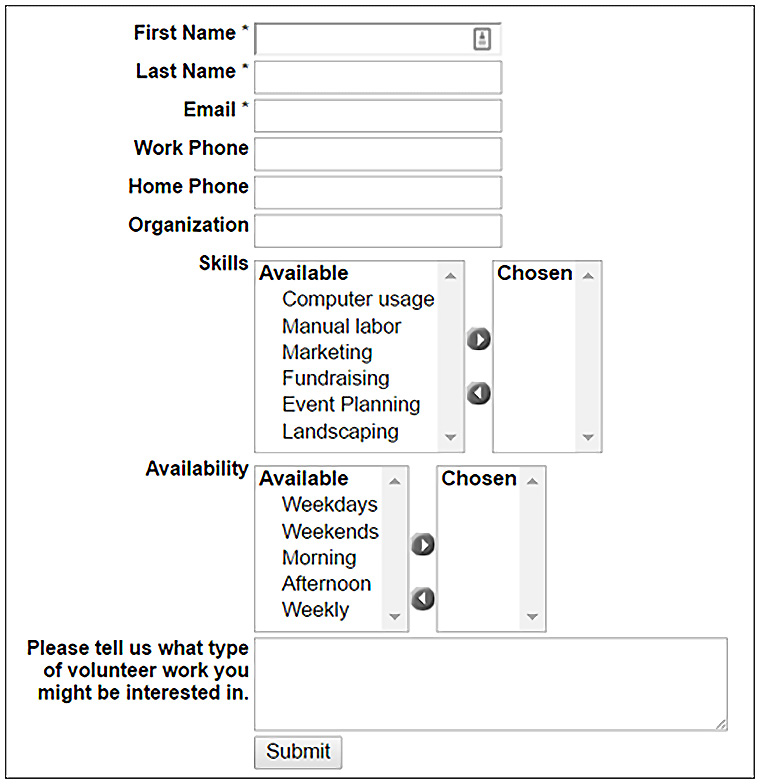
Figure 5.10 – Example of the V4S IFRAME for volunteer signup once it has been embedded into a website
V4S via Experience Cloud
V4S requires Partner Experience Cloud licenses for volunteers because campaigns are a part of the process. There is a new SKU for these Experience Cloud licenses from Salesforce for Nonprofit Cloud users. Be aware that there is an additional cost for the free V4S package if the nonprofit chooses to use Experience Cloud. Then, there is the additional effort of building out the Experience Cloud interface – that is another certification entirely. Additional information on Experience Cloud can be found here: https://trailhead.salesforce.com/credentials/experiencecloudconsultant.
Learning to build Experience Cloud interfaces is beyond the scope of the Nonprofit Cloud certification:
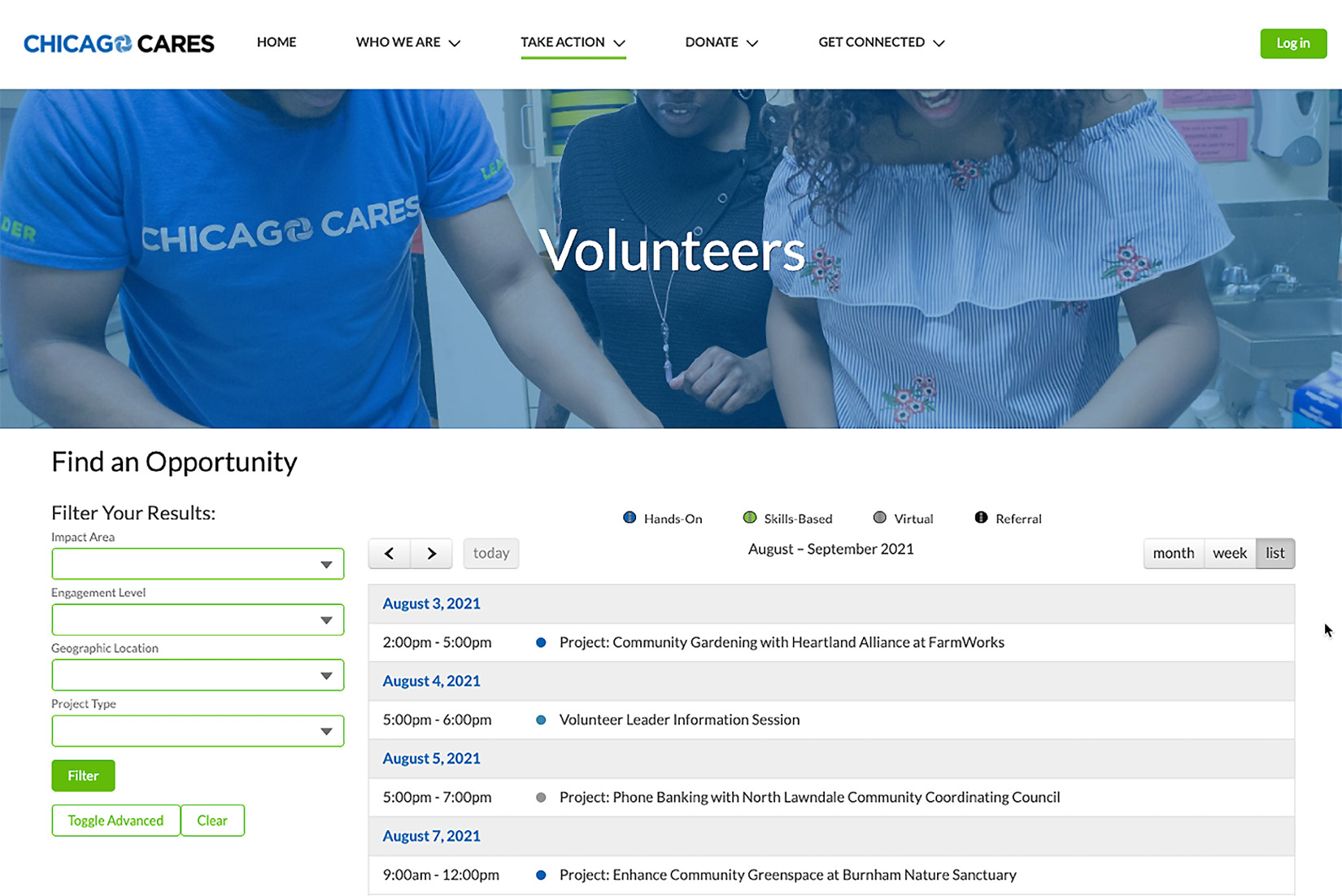
Figure 5.11 – Example of a V4S volunteer interface built into Experience Cloud
Summary
Although V4S is a relatively simple package, it is highly flexible and very customizable so that it can meet several different use cases and business processes that nonprofits have for volunteer engagement and management. V4S can automate standard processes, such as collecting contact information, providing a dynamic calendar of volunteer opportunities for volunteers to choose from, and sending volunteer notifications.
V4S is scalable within the standard Salesforce limits of API calls and records. It works best with NPSP but can be a standalone product as well. V4S pages for registration and signup and volunteer hour reporting can be integrated into an existing website, or nonprofits can use Experience Cloud to build a unique volunteer experience for their users.
V4S rounds out the triumvirate of nonprofits: fundraising, program management, and volunteers. We have covered a variety of use cases where a nonprofit might use Volunteers for Salesforce to engage with and manage volunteers, regardless of whether volunteers sign up for shifts or are assigned, whether there are many or few volunteers, and whether the volunteers sign up for one shift or ongoing shifts. You should now have a better understanding of the architecture of Volunteers for Salesforce and how it works to handle the data for recording volunteers, the shifts they work, and the hours they serve. Besides this, we discussed the two current Salesforce options for presenting this information to volunteers: IFRAMEs and Experience Cloud.
What else do nonprofits need? In the next chapter, we'll see what is available to round out the tools that nonprofits may need to automate their business processes. In Chapter 6, What Else Is Needed from Nonprofit Cloud?, we will look at Grantmaking and Grants Management, Marketing and Engagement, and Elevate and the Accounting Subledger.
Further reading
Take a look at the following resources to learn more about the topics that were covered in this chapter:
- Manage Volunteers for Nonprofits: https://trailhead.salesforce.com/content/learn/trails/nonprofit_volunteer
- Volunteers for Salesforce Documentation: https://powerofus.force.com/s/article/V4S-Documentation
- This book's GitHub repository: https://github.com/SalesforceFoundation/Volunteers-for-Salesforce
- The Data Dictionary for Volunteers for Salesforce: https://salesforce.quip.com/FEp0AOdWp5tc
